Dealing with heavy, wet snow—what we lovingly call “concrete snow”—is the worst, right? It’s dense, sticky, and it destroys weak blowers, snapping shear pins and turning what should be a quick job into a frustrating, clogged mess. If you live in an area prone to back-breaking, wet, heavy snowfall, having the right machine isn’t an option; it’s a necessity.
See, wet snow is 3 to 5 times heavier than that light, fluffy powder. It sticks stubbornly to the augers and freezes right inside the chute. If you don’t have a snow blower that can handle that extra weight, you’ll be struggling with constant clogs and slowdowns.
To conquer this kind of winter sludge, you need serious horsepower, relentless torque, and an effective design that handles slush instead of collecting it. We’ve dug into the features, checked the specs for 2025, and pulled out the top five snow blowers that actually dominate the heaviest, wettest storms.
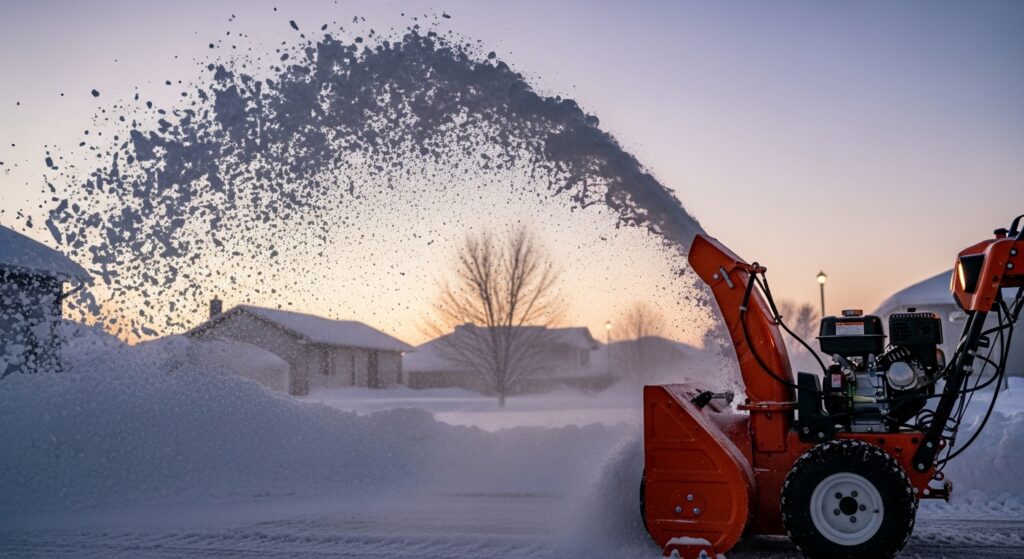
How We Chose the Best Snow Blowers for Wet Snow
When selecting snow blowers capable of clearing that heavy, wet snow without breaking down, we looked past the flashy marketing and focused on the mechanical guts of the machine.
Here’s what we prioritized in our evaluation of these heavy-duty performers:
- Wet Snow Performance & Clog Resistance: We focused on real-world performance in clearing slush and preventing the chute from clogging, including how fast the impeller RPM is.
- Torque & Engine Size: For gas models, wet snow demands an engine of 250cc or more. We looked for units that deliver the instant torque needed to break through heavy slush.
- Intake Height: This is key, especially if you deal with massive curb piles left by the city snow plow.
- Steering Comfort: Since these heavy-duty machines can weigh close to 200 pounds, features like power steering or auto-turn are essential for making tight turns easier, especially in sticky snow.
Buying Guide: What Actually Matters for Wet Snow
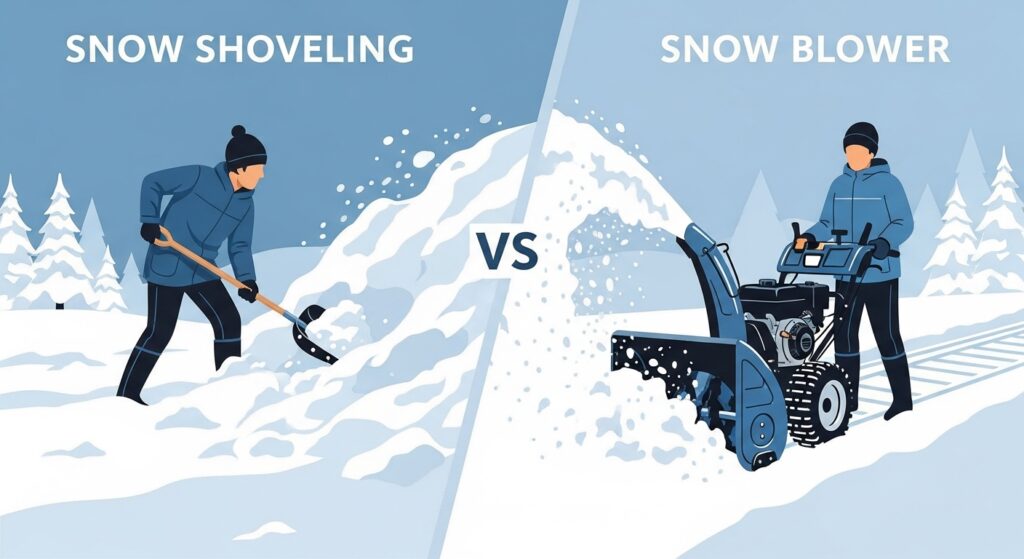
When you’re shelling out good money for a machine, you need honest advice on what features actually translate into better performance in heavy snow.
Stage Design: Two-Stage vs. Three-Stage
For heavy, wet conditions, you need to ignore single-stage machines altogether.
- Two-Stage Blowers: These are great workhorses. The serrated auger blades collect the snow, and then a powerful impeller fan blows the snow out the chute (two steps). Two-stage blowers handle both heavy, wet snow and light snow very well. They are also the best choice if you have a gravel driveway because the auger blades do not contact the ground.
- Three-Stage Blowers: If you consistently get massive, heavy dumpings of snow and ice, a three-stage is arguably the best option. They are similar to two-stage, but they include an additional auger called an accelerator that spins much faster. This speeds up the process before the snow hits the impeller, shooting the snow out with a lot of force. They are fantastic for clearing icy, heavy piles left at the end of the driveway by the city plow.
Engine Torque
For gas machines, wet snow demands 250cc+. Don’t confuse engine size with efficiency; the machine’s ability to move snow relies heavily on impeller speed and torque. For instance, a 265cc engine can still throw snow just as far and fast as a 420cc unit, depending on the overall design.
Impeller and Chute
A lot of clogging happens here, so pay attention.
- Impeller Size: A 14-inch impeller often resists clogging better than smaller 12-inch impellers.
- Chute Material: While metal is durable, high-quality polymer chutes can actually be better for slush. They are slicker and naturally resist freezing, which helps the sticky snow slide right through.
Practical Tip: Steering
Since wet snow adds weight to an already heavy machine, power steering (like auto-turn or trigger steering) makes a huge difference, especially if you have physical limitations or a long, twisting driveway.
Quick Comparison Table
| Model | Clearing Width | Engine/Power | Best For | Price Tier |
|---|---|---|---|---|
| Ariens Deluxe 28 SHO | 28″ | 306cc Gas | Heavy Slush Power | High |
| Honda HSS928ATD | 26″ | 3-Stage Gas (357cc) | Plow Piles | High |
| EGO Power+ SNT2405 | 24″ | 56V Battery | Battery Torque | Med-High |
| Toro SnowMaster 724 QXE | 24″ | 212cc Gas (Single-Stage) | Speed | Medium |
| Husqvarna ST 224 | 24″ | 208cc Gas (Two-Stage) | Value | Budget/Med |
Top 5 Best Snow Blowers for Wet, Heavy Snow (2025 Edition)
1. Ariens Deluxe 28 SHO – Best Overall for Wet Snow
Verdict: This is the raw power king for chewing through heavy “cement snow”.
Why it Wins: The high-output (SHO) impeller spins faster than standard models, which is your best defense against wet-snow clogs. This machine handles deep, heavy, wet snow impressively.
Specs & Features: It runs on a large 306cc engine and has a powerful 14-inch impeller. It boasts auto-turn steering and six forward speeds plus two reverse speeds, giving you full control over varying snow conditions. It can throw slush up to 55 feet away.
- Pros: Insane power, great traction from its aggressive tread tires, and it starts easily (usually with the first pull). It includes handy extras like an electric push-button start and LED headlights.
- Cons: It’s a beast, meaning it’s heavy and loud. If you only get light snow, this is probably overkill.
Best For: Medium-to-large driveways and for serious users who face frequent, substantial wet snow events.
2. Honda HSS928ATD – Best for Steep Driveways & Packed Snow
- Two stage
- Track drive, with adjustable auger height
- 270Cc Honda gx ohv engine
- Clears 28” wide, 1900 lb./min
- Electric start
Verdict: If you’re dealing with steep slopes, icy buildup, or heavy, wet snow that stops lesser machines dead—this is the beast you want.
Why it Wins: Honda’s two-stage system paired with a commercial-grade 270cc Honda GX engine delivers exceptional torque and reliability. The track-drive system gives it unmatched traction on hills, inclines, and uneven surfaces—no wheel slip, no drama. It throws snow up to 52 feet, and its hydrostatic transmission lets you dial in the exact speed you want with zero jerking.
Specs & Features:
This model comes with a 270cc OHV 4-stroke Honda engine, electric start, track drive, and a smooth hydrostatic transmission (HST). The auger housing is built to chew through deep, frozen banks, and the chute control is electric for easy adjustments on the fly. Honda’s build quality means fewer vibrations and a quieter, more controlled feel.
Pros:
-
Incredible traction and stability on steep or icy driveways
-
Ultra-reliable Honda GX engine
-
Hydrostatic drive gives total speed control
-
Electric chute and auger height control for convenience
-
Durable build with lower maintenance needs than three-stage snow blowers
Honesty First:
Honda snow blowers are legendary—but also some of the most expensive machines on the market. Tracks improve traction but make turning heavier compared to wheeled units. Also, replacement parts can be pricey.
Best For:
Homeowners with steep driveways, icy terrain, or heavy/wet snow who want maximum reliability, premium controls, and a machine built to last decades.
3. EGO Power+ Cordless 2-Stage Snow Blower (SNT2405) – Best Battery Model for Wet Snow
- Bundle includes the cordless two-stage snow blower, (2) 7.5Ah ARC Lithium batteries, dual port charger, plus an additional 7.5Ah ARC Lithium battery
- Peak Power technology combines the power of any two EGO POWER+ 56V ARC Lithium batteries
- Throws snow up to 50 feet
- Clears up to an 18-car driveway with up to 8 inches of snow on a single charge with two included 7.5Ah ARC Lithium batteries
- 24-inch clearing width, 20-inch intake height with variable auger speed control system to adjust snow throwing distance
Verdict: This unit delivers surprisingly strong electric torque needed to handle slush without the hassle of gas.
Why it Wins: The dual 56V battery system delivers instant torque, powering through heavy, wet material immediately without needing engine warm-up. While gas is traditionally more powerful for the absolute worst sludge, this is arguably your best choice for a battery-powered two-stage unit that can handle heavy dumping.
Specs & Features: It’s a self-propelled, two-stage machine with a 24-inch path and can throw snow up to 50 feet away. It features variable-speed control for comfortable travel up and down slopes, power steering, and includes a dual charger for its two 7.5Ah batteries. It is incredibly quiet compared to gas models.
- Pros: Quiet operation, zero maintenance (no gas or oil), and easy electric starting. It’s easy to assemble and maneuver despite its 145-pound weight.
- Cons: Runtime decreases significantly when dealing with very heavy loads. The levers can be tough to adjust in freezing temperatures.
Best For: Homeowners who prioritize convenience, low noise, and environmental friendliness, but still need serious two-stage power for occasional heavy, wet snow.
4. Toro SnowMaster 724 QXE – Fastest for Medium Driveways
- Bundle includes 4 items: one (1) Toro 26 in. Power Max e26 60V* Two-Stage Snow Blower, one (1) 60V MAX* Flex-Force 5.0Ah Lithium-Ion Battery, one (1) 60V MAX* Flex-Force 5.0Ah Lithium-Ion Battery and one (1) 60V MAX* Flex-Force 5.4 Amp Lithium-Ion Charger
- Two-Stage Snow Blower: Heavy-duty, steel construction. Tackle years of tough jobs with confidence thanks to steel construction in the housing, frame, deflector and chute. This machine is built to last.
- Lithium-Ion Battery: Compatible with all Toro 60-Volt Flex-Force tools. One (1) 60-Volt Maximum, 5.0 Amp hour, 270-Watt hour and one (1) 60-Volt Maximum, 10.0 Amp hour, 540-Watt hour
- Battery Charger: Works for all batteries in Flex-Force Power System.
- The images shown are for illustration purposes only and may not be to scale. Actual product sizes may vary.
Verdict: This machine is the speed king, getting through everyday wet winter storms quickly and efficiently.
Why it Wins: This model uses a hybrid design (often categorized as single-stage/gas due to its auger contact) that allows the ribbon auger to spin up to 10 times faster than normal. This rapid movement helps the machine stay “self-cleaning,” preventing the sticky wet snow from lingering and clogging.
Specs & Features: It clears a 24-inch path with a 212cc engine. Its best feature is the comfortable variable-speed throttle control, which allows the machine to naturally match your walking speed, unlike traditional geared blowers. It can throw snow up to 40 feet.
- Pros: Extremely fast and efficient, allowing testers to cut their clearing routine in half. The chute moves instantly, and controls are easy to manage. It includes an electric start option.
- Cons: It lacks a reverse speed, and testers noted that it struggled with slipping when used on steep inclines.
Best For: Homeowners with level, medium-sized driveways who want speed and easy operation for regular winter snowfall.
5. Husqvarna ST 224 – Best Value Workhorse
Verdict: A reliable two-stage option that provides strong performance and useful features at a friendlier price point.
Why it Wins: It utilizes a ribbon auger design which is intended to mix air into the snow to help prevent clogging—a necessity when dealing with wet conditions. It offers serious power and features often reserved for higher-end models.
Specs & Features: This two-stage machine features a 208cc engine, electric start, and a 24-inch clearing path. Crucially, it comes with power steering (via steering levers) and heated hand grips, making the chilly job much more comfortable.
- Pros: Reliable starting (one pull generally works even without the electric start) and easy maneuverability due to the power steering. The handles are adjustable to accommodate different heights.
- Honesty First: While highly reliable, the manufacturer ideally rates it for clearing snow depths up to 12 inches. It may need to be operated slower in the deepest, thickest slush compared to the highest-end competitors.
Best For: Budget-conscious buyers who need dependable two-stage power and comfortable, useful features for clearing long driveways.
Pro Tips for Handling Wet, Heavy Snow
Even the best snow blower can get overwhelmed by sticky, wet slush. Use these real-world tips to keep running smoothly:
- Coat It Down: This is huge. Before you tackle the wet stuff, thoroughly coat the inside of the chute, the impeller, and the auger with a non-stick spray. Specialized snow blower sprays (like DuPont or Stens) or even cooking spray (like PAM) or silicone spray/WD-40 can make the snow literally slide through without sticking.
- Go Faster (or Take Smaller Bites): It seems counterintuitive to speed up when clogging occurs, but faster speeds spin the snow out quicker. If the snow is really deep, don’t try to take a full-width pass. Instead, take half-width passes (or even one-third width) to keep the engine RPMs high and prevent the machine from bogging down or compacting the snow.
- Don’t Wait for the Storm to End: Clear the snow as quickly as possible. Wet snow is tough enough on its own; if you let it freeze overnight, it turns into solid ice that’s incredibly hard to move.
- Clear Clogs Safely: If a clog happens, IMMEDIATELY turn off the engine and remove the key. Wait at least 10 seconds for all moving parts to completely stop. Use the provided clean-out tool, a broom handle, or a long-handled wooden spoon to clear the blockage—NEVER your hands or feet.
- Get Spares: Wet snow often hides rocks and ice chunks. Keep spare shear pins handy, because they always seem to break when the hardware store is closed.
Frequently Asked Questions
What’s the best snow blower for very wet snow?
For the most powerful and consistent performance in very heavy, wet snow, a high-end gas-powered two-stage (SHO models) or a three-stage snow blower is recommended. These units provide the highest torque and capacity needed for continuous operation in slush.
Do 3-stage snow blowers handle slush better?
Yes, three-stage snow blowers are highly efficient at handling dense, wet snow and crushing through heavy, icy plow piles because they incorporate an accelerator that chops up the material before it hits the impeller. They generally clear snow faster and throw it farther than two-stage models.
Can electric snow blowers work in heavy wet snow?
Yes, modern two-stage battery-powered models, like the EGO Power+ SNT2405, perform surprisingly well and can handle challenging conditions. They offer excellent torque and minimal maintenance. However, for extremely high volumes of slush, traditional gas models often maintain power longer.
Why does wet snow clog the chute?
Wet snow contains high moisture content, which causes it to clump together easily and stick to metal or plastic surfaces. Additionally, moving too slowly through the snow allows the material to pack down inside the auger and chute before it can be efficiently expelled.
What size engine do I need for wet snow?
For gasoline snow blowers, an engine size of at least 250cc is generally needed to ensure enough torque to power through wet material without stalling. For professional-grade results in heavy, wet conditions, models of 10 horsepower (or around 305cc to 357cc) or more are highly recommended.
Conclusion
If you live where the snow turns into concrete halfway through the day, investing in a robust gas-powered two-stage or three-stage machine is the way to save your back and maximize your uptime. Whether you choose the sheer power of the Ariens, the plow-pile-crushing capability of the Cub Cadet, or the quiet strength of a two-stage electric EGO, you need to buy the blower for the worst storm you expect, not just the average snow day.

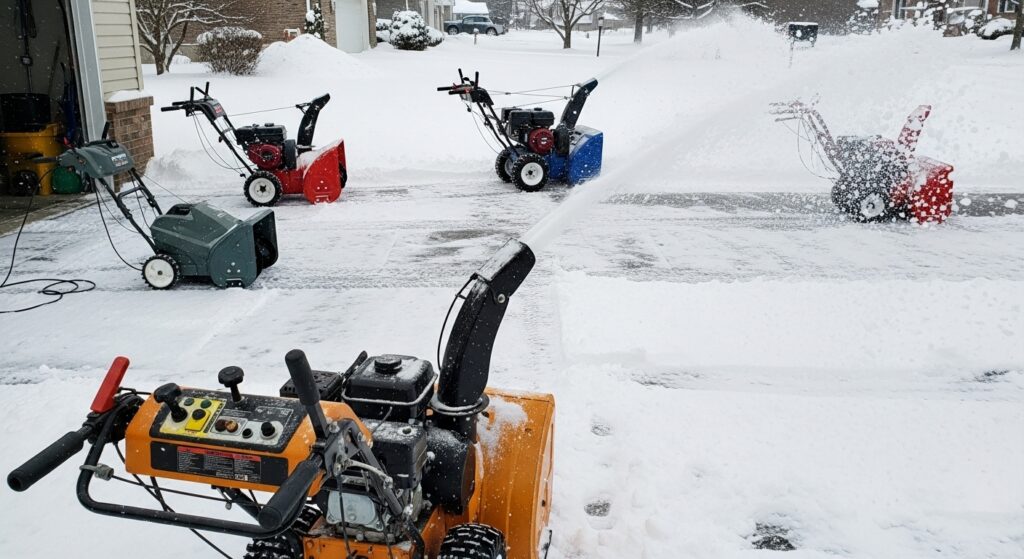


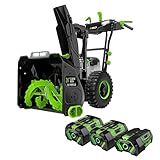


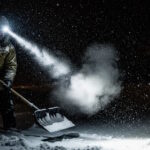
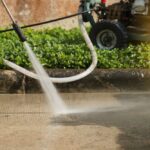

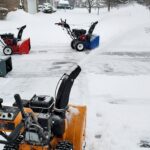

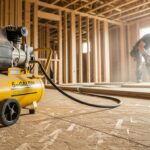
3 thoughts on “5 Best Snow Blowers for Wet, Heavy Snow”